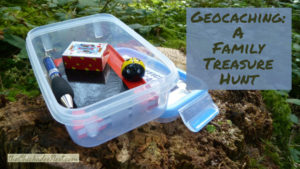
I’ve always been a big reader. I remember learning to read in Kindergarten, and I loved reading so well that my teacher sent stacks of yellow “I See Sam” readers home with me to read over the summer between Kindy & first grade. I loved it.
Growing up, it was the Cat in the Hat, Berenstain Bears, Shel Silverstein poems and The Giving Tree, and The Velveteen Rabbit which eventually turned to the Eddie and Penny books by Carolyn Haywood, Beverly Cleary and Ramona and Henry and Ribsy, Freckle Juice, and stacks of Nancy Drew and the Hardy Boys. Roald Dahl was one of my favorite childhood authors. I loved Charlie and the Chocolate Factory, James and the Giant Peach, and the BFG. The Chronicles of Narnia opened an amazing new world.
My Godmother lived far away, but every birthday she would send me these wonderful classic stories: Anne of Green Gables, The Wizard of Oz, The Secret Garden, The Little Princess, Wuthering Heights…so many more. Beautiful stories.

As a parent, I’ve always known that I’ve wanted to give the same gift to my children: the love of words, books, and reading. As homeschoolers, it was fairly easy to make that a priority. We were reading constantly. We’d have bedtime stories before bed, and stories during the day when the kidlets were young. As they’ve gotten older, we’ve implemented reading into school time, choosing a literature-based curriculum that involved a lot of family reading. Those daily “read-alouds” helped instill that love of reading in both RocketBoy and OtterGirl through the years. Now both of them usually have a book in hand, whether we’re making a 5-minute errand run, or just going outside to play. (Or to find a comfy spot out in the yard to snuggle with that book!)
FixerGirl and I are still in the learning stages. It was with this in mind that I was asked to review a book entitled “Teach a Child to Read with Children’s Books,” by Mark B. Thogmartin and Mary Gallagher. (I was given a free copy for my unbiased review! No other compensation changed hands, and it has not influenced my review in any way.)
I enthusiastically accepted the chance to review this book, as the title itself reflected the way that we’ve been “doing reading” at our homeschool since day one. We ran through the prerequisite phonics programs (I used different publishers for both RocketBoy & OtterGirl) but the outcome was the same, I believe, thanks to exactly what this book supports: creating a lifestyle of reading around the child. Limiting screen time. Reading real books with them constantly, even if the words are a little over their heads… if their interest remains, read. Run your finger under the words as you read so that they can keep up, and eventually they’ll be making those connections themselves.
“Teach a Child to Read” does differ in that it is not a system, per se. If you’ve used a program like “Teach Your Child to Read in 100 Easy Lessons,” this is inherently dissimilar. It is not scripted and does not walk you through step by step with a bunch of “you must do this” items in order to eventually have a successful reader. Instead, it gives you practical pointers and well-researched reasons some teaching strategies work, where others may fail. It emphasizes doing things naturally, creating an atmosphere of learning in your home where learning to read comes without a lot of planning, curriculum programs, or overly-complicated phonics charts or systems.
The book’s introduction reads, “Nothing else affects a child’s future in quite the same way as learning to read. All other schoolwork depends on the ability to read fluently and with understanding.” And I couldn’t agree more. It is obvious that the authors have done their homework, so to speak, in writing this book.
The first four chapters tell us some of the history and research behind such a simple-sounding subject as teaching children how to read. I had no idea there was ever a big debate in educational circles about the best way, (other than some vague phonics vs. sightwords stuff I’d barely paid any attention to!) but Chapter One tells all about how educational experts finally came to the conclusion that naturally, is best. Chapters 2-4 explain conceptually, how a child acquires language, what we can learn from those kiddos who are early readers, and then how to find a balanced approach to teaching your own child.
The remaining chapters provide more practical tips, such as how to use “real books,” to teach, which books are best to use, capitalizing on those teachable moments that arise every day, determining when your child is ready to learn, etc. There are also some helpful booklists and resources at the end of the book.
If you are looking for some helpful tips for teaching your little one to read, I would definitely recommend this book. It is good to know the whys and wherefores behind teaching techniques, and knowing that establishing a natural lifestyle of reading is so integral to the process is a wonderful pat on the back for those of us who have been doing it that way all along.
Check out these other posts:



 The Chickadee Nest is a place where we share peace. We talk home, family and time management, educational ideas, recipes and encouragement, faith, personal stories, gardening fun, bargains and anything along those lines. I hope to help inspire and equip you to be intentional in life — to find that peace at home we are all striving for.
The Chickadee Nest is a place where we share peace. We talk home, family and time management, educational ideas, recipes and encouragement, faith, personal stories, gardening fun, bargains and anything along those lines. I hope to help inspire and equip you to be intentional in life — to find that peace at home we are all striving for.


Thank you so much for your review! We believe many parents struggle to help their children with reading because they try to follow a strict, prescribed formula. Using authentic children’s literature and make reading an enjoyable experience gives any parent the foundation they need to teach their child to read. I’m happy to hear of your children’s love for reading, it’s encouraging for those on the fence to know that it’s possible and there is support available. Mary Gallagher
I would be interested in reading about this. We just found out though that what we long suspected is true. Our daughter has a receptive and expressive language delay. And we are experiencing real difficulty teaching her to read. The sounds and language don’t really work for her. So we are still experimenting with methods. But we definitely try to read her books regularly and make books more prevalent in the house than screen time.